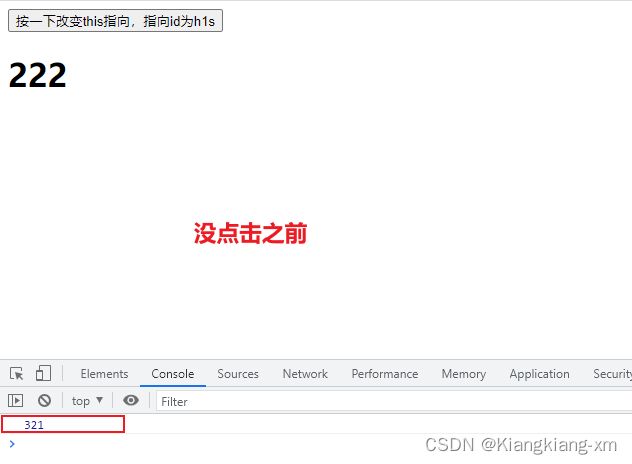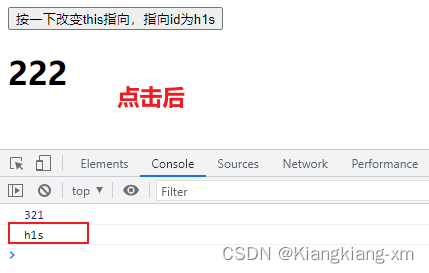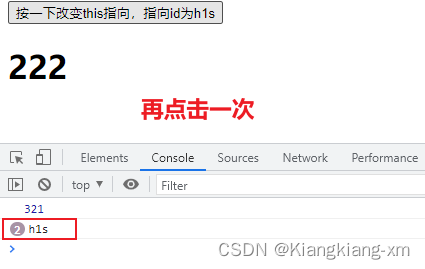共同点:
可以改变this指向
语法: 函数.call()、函数.apply()、函数.bind()
不同点:
1. call、apply可以立即执行。
bind不会立即执行,因为bind返回的是一个函数需要加入()执行。
2. 参数不同:
apply第二个参数是数组。
call和bind有多个参数需要挨个写。
3.场景:
1. 用apply的情况
var arr1 = [1,2,4,5,7,3,321];
console.log( Math.max.apply(null,arr1) )2. 用bind的情况
var btn = document.getElementById('btn');
var h1s = document.getElementById('h1s');
btn.onclick = function(){
console.log( this.id );
}.bind(h1s)
例子:
· 原本的情况:
var a = '你好';
function fun(){
console.log( this ,this.a )
}
fun(); //调用fun函数输出结果:

· 用call改变this指向:
var a = '你好';
var b = {a:'这是b对象内的a'}
function fun(){
console.log( this ,this.a )
}
fun.call(b); //立即执行
fun(); //调用fun函数
fun.apply(b); //立即执行
console.log( fun.bind(b) ); //输出结果是一个函数
fun.bind(b)(); //所以bind不是立即执行,需要加()后才会执行输出结果:

· 参数不同:
var a = '你好';
var b = {a:'这是b对象内的a'}
function fun(name,age){
this.name = name;
this.age = age;
console.log( this ,this.a );
}
fun.call(b,'小马',18);
fun.bind(b,'Kiangkiang',20)();输出结果:

· 使用场景:
<body>
<button id="btn">按一下改变this指向,指向id为h1s</button>
<h1 id="h1s">222</h1>
<script>
// 1. 用apply的情况
var arr1 = [1,2,4,5,7,3,321];
console.log( Math.max.apply(null,arr1) )
// 2. 用bind的情况
var btn = document.getElementById('btn');
var h1s = document.getElementById('h1s');
btn.onclick = function(){
console.log( this.id );
}.bind(h1s)
</script>
</body>输出结果:


